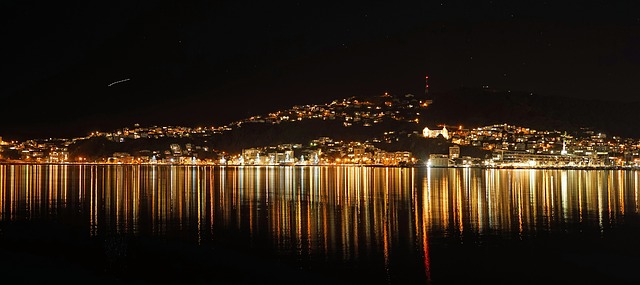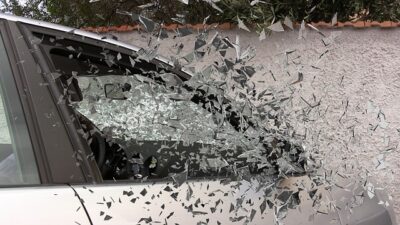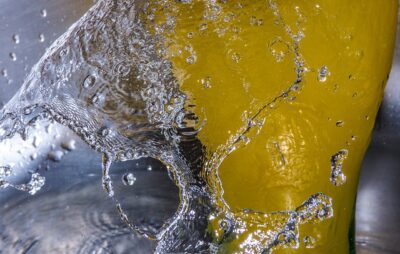The speed limit in Wellington varies from 30 kilometers per hour to 100 kilometers per hour, depending on if you are on a residential street or a highway.
I spent all of March moving no faster than 8 KPH.
Not coincidentally, that was also the speed I had been moving in January and February, but for an entirely different reason: I ran over 80 kilometers the first 59 days of the year.

Image by Bernd Hildebrandt from Pixabay
When we lived in Philly proper over a decade ago I walked everywhere. Even home from work several days a week. I never ran.
I walked everywhere and it felt like I was capable of everything. I walked and got promoted, walked and composed songs in my head, walked and wrote whole blog posts.
That’s why I went on my first five kilometer walk the first week in January while E and the kid were off camping. Not for some New Year’s Resolution. I walked because it was a lovely evening. I walked because I wanted to relocate that powerful creative space in my brain.
Walking was easy. Too easy. Not enough resistance for my body or my brain. Walking quickly turned to running, which quickly turned into the fastest I’d ever ran. Not fast for a real runner, but a high speed for me. Eight kilometers an hour.
For my brain it was slow motion. It was the most cumulative time I got to spend alone with my thoughts away from my family and the internet in a long time. I was getting faster and faster with every incremental 5K and the acceleration was starting to bleed into my home life.
I was ready for a big March full of projects.
Nothing in specific, mind you. It was more a general thrum of positive, productive energy waiting to be unleashed.
That was how I felt the morning of Monday, February 28th. It was a bright, sunny morning at the tail end of summer, and I was going to have some long-put-off minor dental work done at 9am. That doesn’t sound like a good time, but it was one of those things that I had worried over for so long that it felt like it had been permanently tattooed onto a checklist of looming anxieties tallied by my brain. Finally having it done was going to free up many brain circuits for my big March.
That was the morning I woke up to discover that the minor kid’s weekend cold had now spread to E, and that the two of them were in miserable shape. COVID cases were spiking in Wellington, and while the kid is a masking pro she had also plucked a loose tooth out of her mouth on Friday at school lunch just before this cold hit.
Did they have COVID? If they did, I probably shouldn’t go to the dentist to let them spelunk around in my oral cavity for several hours.
Ah, but here was the rub. New Zealand was rolling out Rapid Antigen Tests on March 1.
The next day.
But, due to the spike in cases, all of our ample two drive-up testing locations in the city were completely overwhelmed. They weren’t even doing the shove-the-q-tip-up-the-nose PCR tests anymore. They were just slinging some special pre-sale RATs into your car window and calling it a day.
That was the official testing recommendation of the NZ COVID hotline: getting some RATs slung at you. Otherwise, the official recommendation was to wait two days and then try to buy a RAT at retail. Except, not if you thought you might have COVID. In that case, just isolate.
That was okay. It was fine. I’m good in a crisis. It wasn’t any worse than a long-awaited dental procedure. I called the dentist to cancel on account of my potential COVID exposure, grabbed my phone, my wallet, and a mask, and leapt into the car wearing the same too-small t-shirt I had slept in. This didn’t need a big plan, a water bottle, or packing up my laptop. I’d drive up to the testing center, get some tests thrown in my window, and be back in an hour. Two, tops.
Had I over-thought, over-packed, and over-prepared, would things have gone any differently? Was I moving too fast in that moment? I had all of March to think about it, and I still can’t say for sure.
The drive-up testing center was in a neighborhood I did not know at all, save for the one time I had visited the day after Christmas to get tested. That day I had gotten thoroughly lost trying to get there and I had lost all sense of taste, but it turned out to be the fault of a holiday pudding and not COVID.
The loss of taste, not the getting lost while driving. They said I was the only person they had tested in days.
This time I knew how to find the testing center, but it didn’t help. There were cars looped around it in each direction like a Möbius strip, moving at a snail’s pace. Not even one kilometer an hour. The line didn’t seem to begin or end, it just was. I followed it down one street and up another, constantly doubling back when I thought I caught the wisp of its tail only to realize that what I thought were cars parked on the street were yet more cars in the un-ending line.
They honked angrily at me, as if I was trying to usurp their spots in the endless strip. No, I just wanted to find where they ended and I could start! There was no one directing traffic, no one advising people how long they would have to wait, no one chucking RATs into windows.
I continued following the line down increasingly smaller and less-familiar streets, getting farther and farther away from my little bubble of known geography around the testing center itself. Had I gone two kilometers? Three? How long would it have taken me to jog it?
I kept trying to turn into the line where I thought it ended only to get honked out of it, double back, circle around, and trace the line again.
Finally, the endless ribbon of cars started tapering off. I could get into line here, and… do what? I still hadn’t seen the line move. The only two people of my own in all of New Zealand were at home sick and I would be in the endless looping line all day.

Image by Vladyslav Topyekha from Pixabay
Then I crashed the car.
I don’t remember all of what happened. Not because I hit my head. I remember the crash. It’s just the moments on either side of it that have shook loose from my brain, or maybe they never firmly adhered in the first place.
This is what I remember. The line of cars was on my right. I drove a block past the end of it. There was a street on my left. I pulled into the street, and then turned out of it.
Then I crashed the car. Headfirst into another car. I can’t tell you which way it was coming from. Was she behind me or coming from the other direction? Did I just make a U-turn a little way into the street, or had I turned all the way into the street and then come back out of it?
As I talked to the police officer afterward and squinted at the position of our wrecked cars I still wasn’t entirely sure. I’ve never crashed a car before, or been a part of one. Of nudges on my back bumper, I’ve had four or five, but always at a low speed, always one I could drive away from.
This was different. A proper crash. The shock of it reverberated up my left arm from where I had my palm firmly planted on the 10 o’clock of the wheel. Before the police and the helpful bystanders it was just our two crumpled cars stopped there in the middle of the street. I got our and looked both ways – uselessly, since we were taking up the entire street. Cars were lining up on either side, hoping to get by.
I’m good in a crisis when I have something to focus on. The other driver was upset but okay. I think I asked her kindly and clinically if she was hurt, but who knows what I sounded like in that moment. We were both okay, except for we were on our way to get COVID tests, and our cars were not, but that’s the job of cars.
Every car that passed us was trying to get in line for a COVID test, but they still stopped and helped us get out of the street, directed traffic, made sure we called the police and tow trucks and the young woman’s mother. We watched the line get longer and longer as we waited for the tow trucks until it stretched past where we had crashed. It still wasn’t moving, just growing. Eventually our cars were towed away, and the young woman was whisked away by her kind mother who was so sympathetic to us both even though I had been the one to hit her daughter’s car.
I’m good in a crisis when I can control something or react to something, and once our cars were towed away I had nothing left. I was alone in my too-short t-shirt with a quarter-charged phone and a massive bundle of all our things that had been in the car tucked under one arm. Charging cords, canvas grocery bags, and the kid’s car monkey, Carmichael the Car Monkey.
I don’t do any app-driven taxi services. I’ve never even ridden in a cab in Wellington, except maybe once with coworkers on a way to a conference three years ago. Could I call a cab there that would drive me back to our neighborhood? It was 15 kilometers back to our house. Two hours on foot? I’d be returning without tests. Would they let me stay in line on foot? Could I just stand between cars and in forward with them, less than one kilometer an hour?
The police officer took pity on me, or maybe he was just doing his job. Driving me home wouldn’t be too far out of the way from where he was meant to be. We both donned our masks and I had my first ride in a police car. (This is a thing that used to sound much more thrilling when I was a kid. That was a long time ago.) We talked about our families, our daughters, COVID, and why my neighborhood doesn’t seem to have a local dairy.
That was the start of my slow month.
There was no COVID, thankfully, not in our house – though we didn’t know for sure until our RATs arrived in another four days. They were slow to come in the mail. The ladies of the house just had a horrible summer cold.
There was no car, either. The process was slow. There was no way to get the car back any faster as we entered a new unending Möbius strip of calls to the insurance company who called the repairer who called the parts dealer who called the insurance company who we called again. And there was no rental, at first because we were all still isolating, and later because we had no idea how long we’d be without a car and didn’t want to pay for a month of car renting.
Anything we wanted for the house, it had to either come via mail in five or six days or I had to walk five or six kilometers to get it and bring it back.
The first trip to the grocery store once we knew we were COVID-free was the hardest. There were a lot of groceries to catch up on and so much milk to buy. Ninetime kilograms of weight strapped to my back and hanging from my shoulders as I hauled it back up the steep flight of stairs that shortcut up to our cul de sac.
It was slow going. Later loads got lighter, easier, and faster. The walks became a regular part of my day.
March was slow, and I liked it. Wasn’t Wellington already slower than I was used to, with its lack finding any book or movie or game or electronics within 10km of my house at any hour of the day?
I leaned into the slowness.
A grocery trip was a chance to explore our neighborhood with the kid. We’d take turns point out unusual houses that didn’t fit in with their surroundings and wonder how they got that way. E and I looked into more options for getting produce in bulk and meat from butchers, avoiding supermarket prices and plastics.
Waiting for something to be delivered that I couldn’t drive into town to pick up gave me the chance to clean a room thoroughly in anticipation of its arrival, to build a line shrine of emptiness that it would specially fill.
I made many trips to and fro from the dentist on foot – finding a sort of zen before sitting in the chair and giving me time to settle back into my body afterward.
It was a slow month and, actually, I loved it. I felt more creative and capable than I had in a long time. Was it the walks? Or, just the lack of ease and immediacy of a car?
I changed. Not from all the walking. My attention span changed. I started taking care of other things that had been gnawing at my brain for years, like the dentist had. I opened boxes that had been packed since we got to Wellington. I rearranged my office and laundered all of my clothes.
Slow-mo March stretched into April, culminating in an epic walk the 12 kilometers from our house in the suburbs to the car rental agency in town. It was time to finally pick up a car, which we’d have for all of one week before ours was finally repaired. I had almost forgotten the car and its absence was the source of all the slowness. The neat red hatchback we rented made one trip for one blessedly large haul of groceries, then sat in our drive for the rest of the week unused.
A week later we had our car back, unbelievably free of any sign of the crash.
We had our car back, but I kept up with the slow life. Moving slowly gave me more time for thinking. It gave me more time to spend energy, but also more time to conserve it. I think it made me faster in the long run, and not only from running.
I was ready for a big May full of projects. Many, specific projects – starting with this post! It seemed only right to write about my slow month to kick off a much faster one. My general thrum of positive, productive energy had maintained and even grown.
That was how I felt this morning. It was a bright, sunny morning at the tail end of Autumn, and I was going to have the final bit of my long-put-off minor dental work done at 9am. I was finally ready to remove that anxiety tattooed on my brain so I could have a big May.
Then, in the middle of making a huge dinner that would yield frozen leftovers that would last for months (going slow to go fast), my computer died. First it typed random letters. Then it typed nothing at all. Then it froze and sputtered. And then it was dead, and along with it my access to all of the various notes, schedules, plans, and resources I had made for May.
Wellington isn’t like a big city in America. There’s no 24-hour anything where I can quickly pick up a cheap Windows laptop and keep plugging away. I just have to start my day tomorrow with dropping my laptop off to the local Mac repair shop and hope for the best.
It’s eight kilometers away. An hour’s walk.
Maybe it will be a slow month, again. Maybe that’s not such a bad thing.
But, maybe I’ll drive there.
